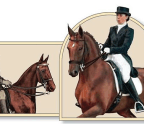BUSTING MYTHS ABOUT GENDER AND COAT COLOR
Aug 25, 2020
2 minutes

“Chestnut mare, beware.” If you’ve ever used this phrase or nodded knowingly in agreement when you heard it, you’ve been perpetrating a scientifically inaccurate and potentially harmful stereotype, according to new research from the University of Sydney.
For the study, researchers asked 1,233 riders to complete a 151-question survey. The Equine Behavior Assessment and Research Questionnaire asked respondents a variety of questions about the behavior of their horses under saddle, in-hand and
You’re reading a preview, subscribe to read more.
Start your free 30 days



